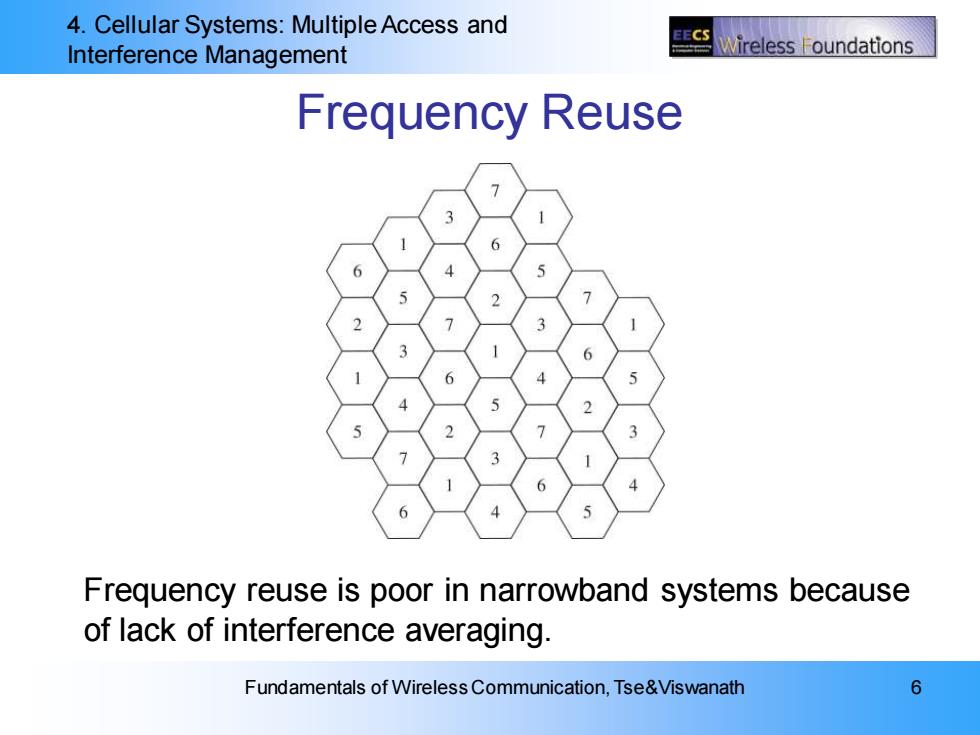
4.Cellular Systems:Multiple Access and Interference Management Vireless oundations Frequency Reuse Frequency reuse is poor in narrowband systems because of lack of interference averaging. Fundamentals of Wireless Communication,Tse&Viswanath 6
4. Cellular Systems: Multiple Access and Interference Management Fundamentals of Wireless Communication, Tse&Viswanath 6 Frequency Reuse Frequency reuse is poor in narrowband systems because of lack of interference averaging

4.Cellular Systems:Multiple Access and EECS Interference Management Wireless F oundations Wideband System:CDMA ● Universal frequency reuse:all the users in all cells share the same bandwidth (1.25 MHz in IS-95 and 1x) ● Main advantages: Maximizes the degrees of freedom usage Allows interference averaging across many users. Soft capacity limit Allows soft handoff Simplify frequency planning 。 Challenges Very tight power control to solve the near-far problem. More sophisticated coding/signal processing to extract the information of each user in a very low SINR environment. Fundamentals of Wireless Communication,Tse&Viswanath 7
4. Cellular Systems: Multiple Access and Interference Management Fundamentals of Wireless Communication, Tse&Viswanath 7 Wideband System: CDMA • Universal frequency reuse: all the users in all cells share the same bandwidth (1.25 MHz in IS-95 and 1x) • Main advantages: – Maximizes the degrees of freedom usage – Allows interference averaging across many users. – Soft capacity limit – Allows soft handoff – Simplify frequency planning • Challenges – Very tight power control to solve the near-far problem. – More sophisticated coding/signal processing to extract the information of each user in a very low SINR environment

4.Cellular Systems:Multiple Access and EECS Interference Management Vireless oundations Design Goals 1)make the interference look as much like a white Gaussian noise as possible: Spread each user's signal using a pseudonoise noise sequence Tight power control for managing interference within the cell Averaging interference from outside the cell as well as fluctuating voice activities of users. 2)apply point-to-point design for each link Extract all possible diversity in the channel Fundamentals of Wireless Communication,Tse&Viswanath 8
4. Cellular Systems: Multiple Access and Interference Management Fundamentals of Wireless Communication, Tse&Viswanath 8 Design Goals • 1) make the interference look as much like a white Gaussian noise as possible: – Spread each user’s signal using a pseudonoise noise sequence – Tight power control for managing interference within the cell – Averaging interference from outside the cell as well as fluctuating voice activities of users. • 2) apply point-to-point design for each link – Extract all possible diversity in the channel